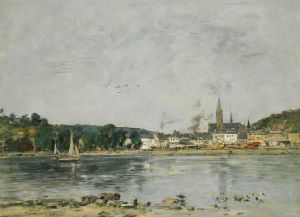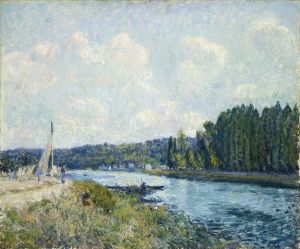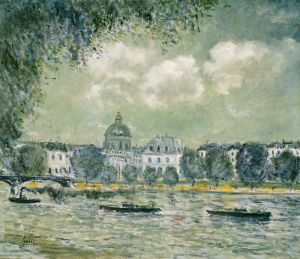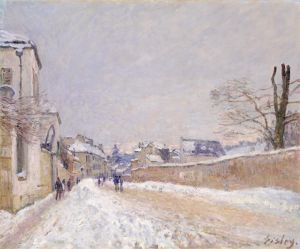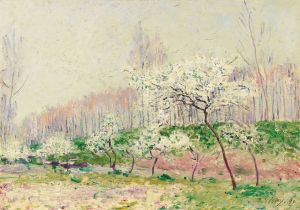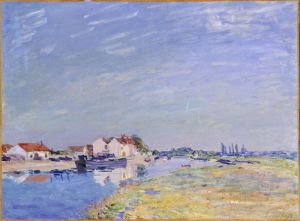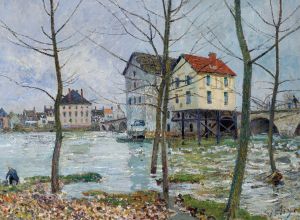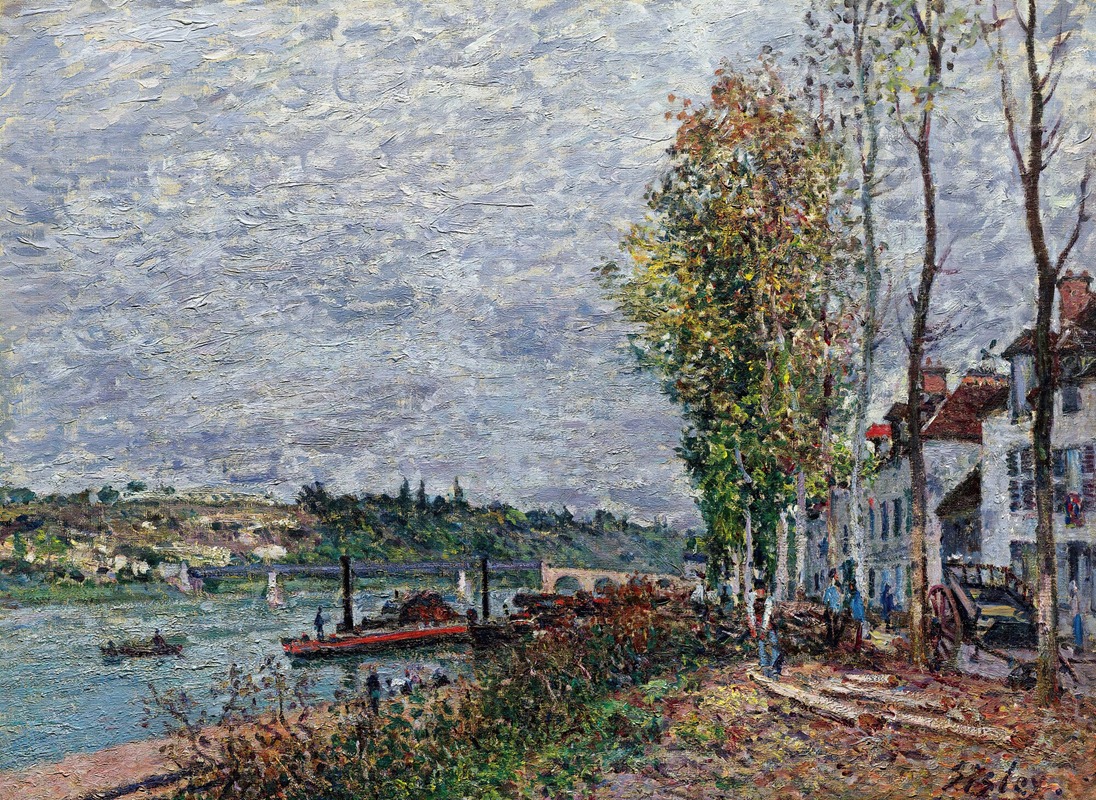
Jour De Brouillard À Saint-Mammès
A hand-painted replica of Alfred Sisley’s masterpiece Jour De Brouillard À Saint-Mammès, meticulously crafted by professional artists to capture the true essence of the original. Each piece is created with museum-quality canvas and rare mineral pigments, carefully painted by experienced artists with delicate brushstrokes and rich, layered colors to perfectly recreate the texture of the original artwork. Unlike machine-printed reproductions, this hand-painted version brings the painting to life, infused with the artist’s emotions and skill in every stroke. Whether for personal collection or home decoration, it instantly elevates the artistic atmosphere of any space.
"Jour De Brouillard À Saint-Mammès" is a painting by the renowned Impressionist artist Alfred Sisley. Sisley, born in 1839 in Paris to British parents, was a pivotal figure in the Impressionist movement, known for his landscape paintings that captured the transient effects of light and atmosphere. His work is characterized by a delicate palette and a focus on the natural environment, often depicting scenes of rivers, skies, and rural settings.
This particular painting, "Jour De Brouillard À Saint-Mammès," translates to "Foggy Day at Saint-Mammès." It was completed in 1884, during a period when Sisley was living in the small town of Moret-sur-Loing, near Fontainebleau, a region that provided him with ample inspiration for his landscapes. Saint-Mammès is a commune located at the confluence of the Seine and Loing rivers, not far from Moret-sur-Loing. The area was a frequent subject in Sisley's work, as he was captivated by the interplay of water, light, and atmosphere.
The painting exemplifies Sisley's ability to convey the mood and essence of a scene through his use of color and brushwork. In "Jour De Brouillard À Saint-Mammès," Sisley captures the ethereal quality of a foggy day. The misty atmosphere is rendered with soft, muted tones, creating a sense of tranquility and introspection. The fog blurs the outlines of the landscape, with trees and buildings emerging subtly from the haze, a technique that highlights Sisley's mastery in depicting the ephemeral nature of weather conditions.
Sisley's approach to painting was deeply influenced by his Impressionist contemporaries, such as Claude Monet and Pierre-Auguste Renoir, with whom he shared a commitment to painting en plein air, or outdoors. This method allowed him to observe and capture the changing effects of light and weather directly from nature. Unlike some of his peers, Sisley remained focused on landscapes throughout his career, rarely venturing into other genres.
"Jour De Brouillard À Saint-Mammès" is a testament to Sisley's dedication to capturing the beauty of the natural world. His work often reflects a serene and contemplative quality, inviting viewers to appreciate the subtle nuances of the environment. The painting is housed in the Musée d'Orsay in Paris, which holds an extensive collection of Impressionist and Post-Impressionist masterpieces.
Sisley's contributions to the Impressionist movement were significant, although he did not achieve the same level of commercial success as some of his contemporaries during his lifetime. Despite this, his work has gained recognition and appreciation over the years for its lyrical beauty and technical skill. Today, Sisley is celebrated as one of the foremost landscape painters of the Impressionist era, and "Jour De Brouillard À Saint-Mammès" remains a cherished example of his artistic legacy.










